The reason Pope John Paul II had more of an indirect spiritual impact on Poland than the United States is because his way of speaking about God, and his Church, is so fundamentally Polish.
“Santo subito! Santo subito!” (“Saint now!”) These are the words that the people shouted in St. Peter’s Square when they heard of the death of Pope John Paul II. No one doubts that this holy man had an incredible impact on our world and, most of all, on his homeland of Poland. A recent survey completed by the Center for the Thought of Pope John Paul II recorded that a majority of Polish people feel that remembering their Independence Day is just as important as remembering the anniversary of Pope John Paul II’s death. In fact, 81 percent of Poles feel that he significantly guided their lives in some way, 1 playing an important role model for them. So, by asking two central questions, we can possibly learn exactly why they admire him so much:
- What are the main differences in thinking between people who live in Warsaw (a city known to be more secular) and people living in Krakow, concerning Pope John Paul II’s pontificate?
- What are the major differences in perception between younger people and those of the older generation?
Answering these questions reveal how the Poles look to John Paul II as, not only a spiritual leader, but also a powerful political advocate, spiritual friend, and an exemplary, devoted member of the Polish Catholic family. Therefore, I will address my primary questions first, but later focus on the connections that various Poles feel they have with Pope John Paul II.
The people in Warsaw are just as proud of Pope John Paul II as those in Krakow, especially because of his pilgrimages there, and the activity of the Solidarity movement (which will be discussed later). Thus, Warsaw is the perfect place to visit to learn about these historical events. It seemed that the people of Krakow felt more personally connected with Pope John Paul II because Krakow was home for him most of his life. Nevertheless, the people of both cities (as well as Lublin) felt so close to him that they often remarked that they “took him for granted” until his death because he was “always there.” This fact is especially true for those who grew up during John Paul II’s papacy, as they had never known a non-Polish pope. People remarked that they miss hearing the pope speak in Polish to them. They said Benedict XVI managed to get by, and that Francis tried speaking Polish once, but that Pope John Paul II was special to them because of his obvious fluency, even making the occasional Polish joke. People in both cities said that they appreciate him more now after his death. I found that the older people seemed more emotional about what John Paul II did for Poland’s freedom from the Soviet Union through his pilgrimages and support from Rome. However, the younger people often also expressed gratitude for this. It seemed that everyone I spoke to possessed a fairly detailed knowledge of the successive events marking Poland’s path to freedom from communist rule, and the Pope’s connection to those events. Surprisingly, there seems little notable difference between younger and older generations on the role John Paul II played as a spiritual influence in their lives.
It is absolutely true that the majority of Polish people love and admire the Pope, but not necessarily in the way I assumed before I visited Poland. When I read the research from the Institute for the Thought of John Paul II, I thought it meant that Poles loved him in a similar way to how Americans idolize their favorite author or sports star. I thought the majority would be aware of his teachings, significant dates in his life (for example the day of his priestly ordination or his beatification), and his political involvement. It would be true to say that some people are aware of all these things. However, this does not extend to the majority.
Pope John Paul II’s 1979 Vigil Mass for Pentecost in Victory Square
Warsaw, Poland
As I mentioned previously, both the younger and the older generations are highly aware of Pope John Paul II’s influence as a political figure. They see him as a rallying point for the communist opposition movement because he was able to publicly resist the tyranny of communist rule by using his worldwide influence as pope to unite the Polish people in this effort. Perhaps, one of his most influential moments was his first pilgrimage to Warsaw in 1979, only a year after his election to the papacy. Most often, people quoted Pope John Paul II’s famous line from the end of his homily in Victory Square during the Vigil of Pentecost, when he said, “Let your Spirit descend. Let your Spirit descend, and renew the face of the earth, the face of this land.” 2 Even those who were only in elementary school at this time remember little “moments” from this occasion. Older people often paused for a moment just to take in the memory, once again, of gathering with half a million of their fellow citizens at this Vigil Mass, occurring while they were still under a regime that did not allow free speech. It was that event that convinced many in attendance just how strongly opposed they all were to this repressive government.
The Pope meeting with Lech Walensa
Over ten million Poles attended at least one of Pope John Paul II’s Masses during his 1979 pilgrimage. Although the Pope did not tell the Poles to start a rebellion, he did emphasize creating an “alternative Poland” with non-governmental social institutions. This led to a series of labor strikes that caused the economy to plummet. In September of 1980, Lech Walesa founded the “Solidarity” movement. This anti-communist, independent trade union quickly grew to nine million members, a fourth of Poland’s population. Although the Soviet Union tried to crush Solidarity by banning it and arresting its leaders, the Catholic Church played a major role in helping it survive underground. The economic crisis became so great that by 1989, the Soviet Union could no longer maintain control over Poland. Thus, Poland peacefully transitioned to a free, democratic country. Walesa was elected president in 1990. The story above was the one I most frequently heard during my interviews. Although phrases such as, “Be Not Afraid” also resonate for some Poles, what strikes their hearts is the Pope’s prayer:
Let your Spirit descend. Let your Spirit descend, and renew the face of the earth, the face of this land.
It was clear to me that Poles are deeply grateful to Pope John Paul II’s political influence there. Yet, the reaction to his spiritual influence and teachings was much more varied. To illustrate how Poles relate to Pope John Paul II’s own devotions, I asked these questions:
- “Do you think that Pope John Paul II’s personal devotions influenced your own?”
- “Do you have a favorite quote of Pope John Paul II, or a favorite idea, that he stressed in his teachings?”
To my surprise, these two questions seemed to puzzle many of those I interviewed. I offered examples of Pope John Paul II’s devotions to Mary, and the Divine Mercy, and ideas such as “Be not afraid,” the Church’s springtime, Totus Tuus (his papal motto), human dignity, the Theology of the Body, and the New Evangelization. All of these themes have been significant in my own Catholic formation, and I know, at least, some of them have been present for many of my American Catholic friends, as well. Yet, these essential elements about Pope John Paul II in the minds of many American Catholics, such as myself, did not seem to catch the attention of Poles. It would not be an exaggeration to say that all but two or three people gave me a confused look. For my part, I was continually puzzled over why these questions seemed either strange or difficult to answer for those I interviewed.
I slowly began to understand why these questions were a source of confusion. A key moment of enlightenment occurred when I was talking to Fr. Maciek Okonski, a young Dominican priest. He offered the same sort of explanations to my questions about how Pope John Paul II had impacted him, as most of the other people offered when I interviewed them. I commented that his response seemed to be the general reaction. He was able to explain why:
This is because he (Pope John Paul II) is always there. But he’s not a special one (i.e., saint). It’s understood that he’s part of the family. So, he’s hard to follow because we know him very well. He’s a model, but a different type of a model. You wouldn’t say your father is a model. (Although,) he is, and he influences you probably the most, but you look to others because there is some freshness that comes with that. John Paul … he’s part of the family.
In other words, this Pope is so close to Poles that many of them feel that they “know him” even without studying his teachings. Why read a book about what your spiritual father has written when you feel that you are as close to him as a child would be with his or her father; when you feel that he will always be there for you in life and in death?
Before returning to my puzzlement about the personal devotion question, I would like to further explain Fr. Okonski’s point by discussing my encounters with Sr. Gaudia, a member of the Sisters of Our Lady of Mercy (St. Faustina’s order), and two of Pope John Paul II’s friends, Maria Rybicka and Teresa Malecka.
Sr. Gaudia, OLM
Sr. Gaudia was born two years to the day after the election of Cardinal Karol Wojtyla to the papacy. As a result, she said she felt very connected to him while she was growing up, and followed him on his pilgrimages, including one to Rome, although she was not wealthy. Even though she did not begin studying his works until she entered the convent, she said that she has always felt the importance of John Paul II for herself, and for Poland:
He was an incredible gift to me personally, but also to me as a Polish citizen … (He) was a huge gift for the whole country, and I participated in that gift and amazement of the whole nation.
She also attributes her vocation, and that of many others, to Pope John Paul II:
When a saint dies his sacrifice of life somehow concludes and gives mature fruits. The year of his death was a year of many vocations to the priesthood and religious life. Me, too. 2005 was the year when I entered, and there were twenty-six girls together with me.
My love for the Church grew, thanks to John Paul. He as the head of the Church showed me the beauty of the Church.
She concluded by saying:
Pope John Paul II is present not only as a memory but as my teacher, inspiration, spiritual father, and a friend. I really feel that he knows me. I feel that I’m close to his heart, and I am his friend (in the spiritual dimension) now, because he died … I entrust him with many things, and I chose him to be my patron saint of my religious life.
It is clear from Sr. Gaudia’s reflections that she is more aware of Pope John Paul II’s direct impact on her life than most people in Poland. However, notice that her friendship with him started the same way. It is based on a feeling of connection with him that became enriched by her studies of him after she already had chosen him as the patron saint of her religious life.
September 1956: Father Karol Wojtila, (center) Teresa Heydel and
future husband, Wujkiem Malecki (far right).
The next interview was with Maria Rybicka and Teresa Malecka. These biological sisters first met Father Karol Wojtyła when Maria was a teenager, and Teresa was in college. They became good friends with him by going on “illegal” group camping trips with, over a period of time, the then Father/Bishop/Cardinal Karol Wojtyła, all while they were still under the communist regime. They remember him as “Uncle” since they did not want to be caught calling him “Father” during their youth ministry camping trips.
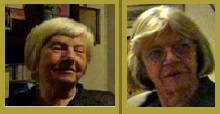
Maria Rybicka and Teresa Malecka
I felt very honored to be able to meet Maria and Teresa. Their interview was rich with stories about their “uncle.” Wojtyła baptized and married some of their children while he was ministering in Krakow, and also continued their relationships while he was pope by arranging “family” meetings during his pilgrimages to Poland, and time spent in Italy. Maria and Teresa even shared with me memories of having campfires at Castel Gandolfo, the papal summer residence in Italy. Here is a short excerpt from Teresa (with a few interjections from Maria) about one of their trips to Castel Gandolfo:
We were invited as a group to Castel Gandolfo, and we were living close to Castel Gandolfo in some other small village. Every day, we were coming for Holy Mass, and then we had, at different times, breakfast or dinner or supper, etc. Once they had organized for us a fire at night with (the) Holy Father. We were sitting on the grass, and he was sitting on a camping chair. And he was singing with us our old stories, or songs, which some of them were not regular songs. There were the ballads created by him, or by us, because of the situation (referring to the communist occupation). And a lot of new couplets were done during this fire (at Castel Gandolfo) … that this situation is new, that our uncle is now the Holy Father, and so on and so on … And it was funny. He was laughing and singing with such enthusiasm, with a lot of energy, and we thought it was how it would (have) been. He was not a pope. He was the pope, but he was not the pope. Very close, warm…uncle. It was very important for saying who he was for us. He was “uncle.” After this moment, we went to St. Peter’s Basilica … and we felt that we were a very small part of his life, and that he is really the head of the universal Church. So, we could see the universalism of the Church … And, whenever we were spending a week with him at Castel Gandolfo, he wanted us to go to Rome to be at the official audience or something like that, and he asked how it was. He wanted to know what we were thinking. He asked, “Have you understood what I said?” It was a good beginning point for a lot of serious discussion.
There is no doubt that Maria and Teresa had a very unique relationship with Pope John Paul II. He was humble, considerate, and down-to-earth even as pope. Perhaps, it is for these reasons that all of Poland feels so connected to him. Maria and Teresa did not talk about the substance of his theology at all during our interview, even though their camping group still meets once a month to discuss his teachings. In fact, they both said that, although he spoke clearly and simply as a pope, his homilies were very difficult to understand when he was a young priest. For Maria and Teresa, it was the personal encounter with him that they found the most inspiring. I think it would be safe to say that in this sense, Maria and Teresa’s relationship with Pope John Paul II is still today very much like the spiritual connection most of Poland feels they have with him. One does not necessarily need to understand what Pope John Paul II said in order to consider him a friend. Cardinal Stanislaw Dziwisz, John Paul II’s personal secretary, and long-time friend of forty years, would agree, as he said in my group interview with him, “My advice for you is to consider John Paul II your friend.”
Cardinal Dziwisz, the author to his left, with the
University of Notre Dame pilgrims.
Let us now return to the question about Pope John Paul’s personal devotions. As I walked around Poland, I began to notice that Mary is central to all Polish devotion, especially Our Lady of Czestochowa. Furthermore, not surprisingly, the image of Divine Mercy is in many churches.
Fr. Alfred Wierzbicki
Yet, I did not connect this fact to the confusion about my question until the last day of my interviews when I was talking with Fr. Alfred Wierzbicki, the second successor to Cardinal Karol Wojtyła as the head of the ethics department at the John Paul II Catholic University of Lublin. 3 Instead of directly answering the question, Fr. Wierzbicki said he did not think that Pope John Paul II had any “personal” spiritual devotions that he did not also share in common with Poland as a nation. This simple sentence allowed me to see the flaw in my question.
The reason Pope John Paul II was so devoted to Mary and the Divine Mercy was because of his Polish heritage. I had seen these devotions around me all week. The problem with my question was so obvious that it had to be pointed out to me. While Pope John Paul II’s devotion to Mary and the Divine Mercy, for example, impacted Catholics of the United States in a noticeable way, devotion to Mary, in particular in Poland, has been very strong for centuries. Both countries claim Mary as one of their patron saints, but while this is highly celebrated in Poland—with religious processions, paintings, icons, chapels, and grand churches—I doubt the majority of American Catholics are all equally aware of this special devotion to Mary in the United States.
Despite the flaw in my question, after further reflection I have decided that I do not think Fr. Wierzbicki’s statement was entirely correct. Pope John Paul II’s relationship to the Divine Mercy is different than his Marian devotion because the theology of the Divine Mercy is relatively so new for Poland compared to its Marian devotion. Sr. Gaudia said that the Divine Mercy was not well-known when young Karol Wojtyła began to pray in front of the image every day during World War II. She said that he did not know anything about it at first, but that he was drawn to the peculiarity of the image. This image was peculiar at the time because Poles were not used to seeing Jesus depicted in paintings barefoot with simple clothes and words imprinted below on the painting (“Jesus, I place my trust in You.”). Wojtyła’s “theology of Divine Mercy,” as Sr. Gaudia called it, eventually attracted the attention of St. Faustina’s sisters, so much so that they made the unusual move of including a note about the “young priest’s words” in their official records from that year. These facts lead me to conclude that Pope John Paul II’s devotion to the Divine Mercy began as something personal, having a great impact on the spreading of the Divine Mercy throughout Poland, and later its spread to the world by canonizing St. Faustina as the first saint in the new millennium.
After my meeting with Fr. Wierzbicki, I was able to see more fully what Fr. Okonski meant by “freshness” from foreign saints. The reason Pope John Paul II had more of an indirect spiritual impact on Poland than the United States is because his way of speaking about God, and his Church, is so fundamentally Polish. While most Poles do not see the ways Pope John Paul II’s theology and philosophy directly impacted them, Americans Catholics do not see how much Poland has impacted us through Pope John Paul II. Yet, in his homeland the one, true Faith remains strong: the Ministry of Foreign Affairs of the Republic of Poland documents that 95 percent of Poles are Catholic, 4 and a study done by the Catholic Church in 2009 found that 80 percent of Polish Catholics go not only to Mass, but also to the Sacrament of Reconciliation at least once a year. 5
From the people I chose to highlight above, it may look like I only talked to highly religious people. Yet, while my 23 interviews did have a bias toward the thoughts of the highly religious, they ranged from an interview with an agnostic who told me the Church is “nothing but a fairytale,” to meetings with a sociologist, a new feminist, and Cardinal Dziwisz. As such, looking back over this blessed time in Poland, it was a wonderful opportunity for me, as a future Dominican (God willing), to get to know more members of my future family, and to walk through a priory nearly as old as the Order itself.
“Totus Tuus, Maria.” (Soon to be Saint) John Paul the Great, pray for us!
- Center for Thought of John Paul II. N.p., Mar. 2007. Web. 07 Sept. 2013. ↩
- John Paul II, Pope. “Mass in Victory Square, Warsaw, John Paul II, 2 June 1979.” Mass in Victory Square, Warsaw, John Paul II, 2 June 1979. N.p., 2 June 1979. Web. 11 Nov. 2013. ↩
- “Pope John Paul II” was added to the official university name after his election to the papacy to show the University’s union with the mission of their most famous and influential professor. ↩
- “Churches and Religious Life in Poland.” Poland. Republic of Poland, 2011. Web. 07 Sept. 2013. ↩
- “80% Polaków Chodzi Do Spowiedzi.” Wiadomosci.wp.pl. N.p., 4 Oct. 2009. Web. 07 Sept. 2013. ↩
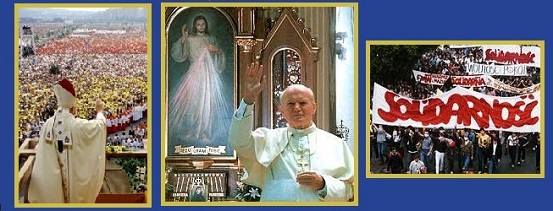

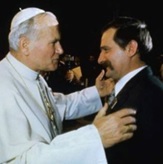

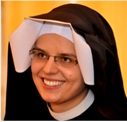
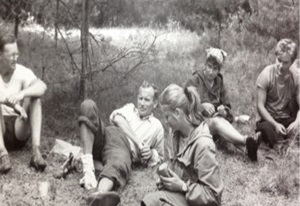

A reader sends in the following related article: 10 Staggering Pope John Paul II Facts That’ll Probably Amaze You.
Thanks for reading!